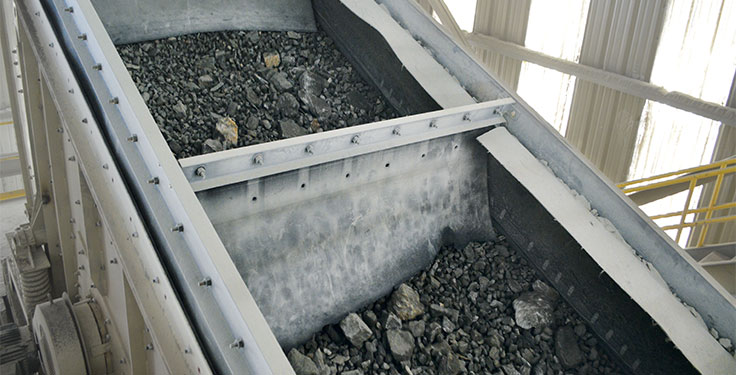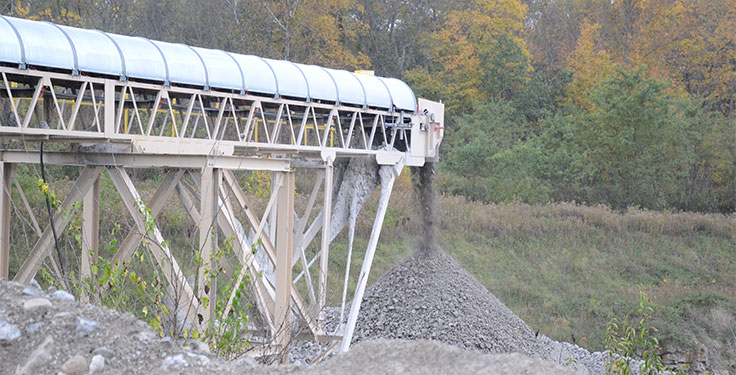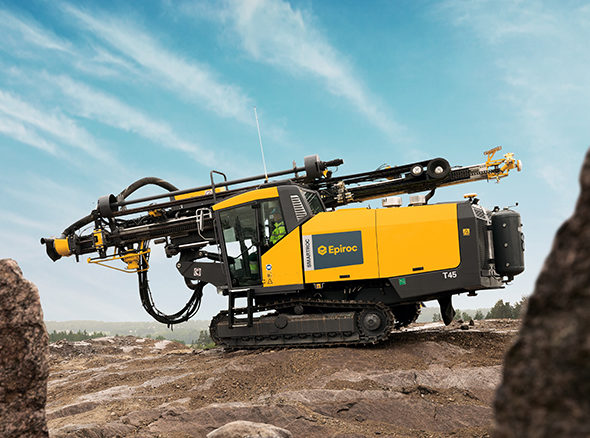Equipment suppliers offer advice that aggregate producers can put to use to enhance their screening operations.
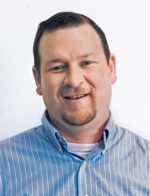
Strategically adjusting mobile screens is critical
Considerations you should make, courtesy of Screen Machine’s Matt Brinkman
When it comes to mobile screens, take the time to adjust the screen as screened material changes or if the machine is moved.
Terrain is rarely ever level in mobile applications. Making sure you have the proper angle of inclination, as well as ensuring the screen is level from side to side to fully utilize the entire screen deck width, are important considerations.
The beauty of mobile machines is it is fairly easy to move the machine to keep the screen in the proper position for maximum efficiency.
Matt Brinkman is director of engineering at Screen Machine Industries.

How belt cuts provide insights on efficiency
Elrus Aggregate Systems’ Barry Proctor details this simple yet effective measure
Many producers don’t use in/out belt cuts to gain insight into screening efficiency and performance in order to improve production.
The screen is the cash box of the plant. If it’s not operating efficiently, it’s costing you money by reducing overall production.
A belt cut from the discharge conveyor will show exactly how efficient the screen is operating and allow the operator to take steps to resolve the problem. In order to determine the effectiveness of the changes, it’s important to make one change at a time, then re-test until the problem is resolved.
Just be smarter than the rock. It sounds easy, but it’s not.
Barry Proctor is Western USA manager at Elrus Aggregate Systems.

Matching media with the screening phase
Haver & Boecker’s Steve Fair explains the value of this approach
One of the most overlooked areas of the screening process is screen media selection. Producers tend to install the same media all the way down the deck, even though different things are happening on that deck in different places.
There are three phases of screening that happen. And, in a lot of cases, there may be three different media types that give them maximum efficiency, as well as maximum longevity. So matching the media with the screening phase will minimize screen media changeouts and maximize production.
Steve Fair is Tyler engineered media manager at Haver & Boecker Canada.

An effective approach for vibrating screens
Deister’s Joe Schlabach explains how to avoid limiting your production
The single-most-overlooked area for vibrating screens is how they are being fed. The material needs to feed onto the feed box or impact area (not on the screen media) in such a way that it spreads the material as wide as possible to use the maximum width of the screen and utilize the total screening area.
The material should not be segregated, or there is a high risk that material will not report across to the entire width of the succeeding decks on multiple-deck screens, therefore not utilizing all of the available screening area and robbing production.
Joe Schlabach is vice president of marketing and sales at Deister Machine Co.
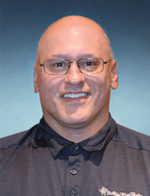
The importance of screen media selection
Buffalo Wire Works’ Dominic Nasso presents an opportunity to utilize more deck area
Selecting the proper screen media is one of the critical aspects managers often overlook to maximize production efficiency and generate greater profits for an operation.
By taking a total-cost-of-ownership approach to screen media, self-cleaning screen technologies, although slightly more expensive, can offer high efficiencies that can quickly translate to a positive cash flow decision. The increased efficiency, maximum use of screen deck surface area, reduced screen change-outs and lower overall maintenance costs can result in a more competitive operation.
Dominic Nasso is executive vice president of sales at Buffalo Wire Works.

Keep quality accessories top of mind
Little details can make all the difference, according to Major’s Mark Roppo
Media selection is obviously critical, but many operations cut corners on accessories like rail rubber, clamp bars and bolts.
If the accessories are not maintained, it doesn’t matter what media you choose – it will fail prematurely. Replacing clamp bars before they collapse, cutting rail rubber to exact length, and capping off gaps to prevent fines from working their way underneath and behind things will all extend media life.
Spending more, be it time or money, on proper installation and replacement intervals of the accessories will decrease downtime and media spending.
Mark Roppo is vice president of Major Wire screen media.
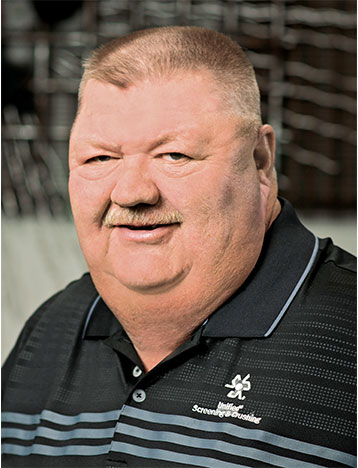
The undervalued role of wire diameter
Unified’s Rod Skindrud shares some of his experience
Many customers underestimate how important wire diameter is to increase throughput.
A customer recently asked: ‘How can I get more throughput on my sand deck and not change my spec?’ He was running a 0.188-in. square opening with a 0.092 Tufflex wire, giving him 45 percent open area. I suggested he stay with the 0.188-in. square opening but move to a 0.063-in.-diameter wire, which would give him 56 percent open area on that deck.
That 24 percent greater open area gives him the potential for a 24 percent increase on that product. A current 200 tph would increase to almost 250 tph. In a 10-hour day, that could be 500 tons more material.
Rod Skindrud is a Unified Screening & Crushing sales representative.

Feed the screen the right way
Doing so will increase efficiency dramatically, says Polydeck’s Jeff McGee
Properly feeding the screen is one of the most overlooked aspects of the screening process. Improperly feeding the screen can reduce efficiency by up to 50 percent and, in many cases, it’s one of the easiest things to correct.
A properly fed screen is one that is fed into the feedbox, with minimal horizontal velocity, evenly across the width of the machine. Poor distribution causes much of the available screen surface to be unused, overloaded or underloaded. This is especially critical for multiple-deck machines.
For wet screens, ensuring the feed is properly slurried before it hits the screen will have a major positive effect – especially for materials with high percentages of fines.
Jeff McGee is business manager of aggregates at Polydeck.

